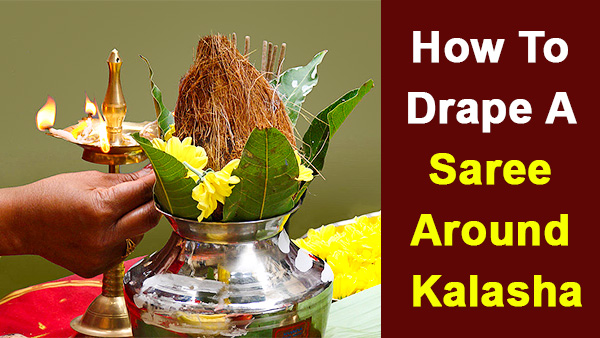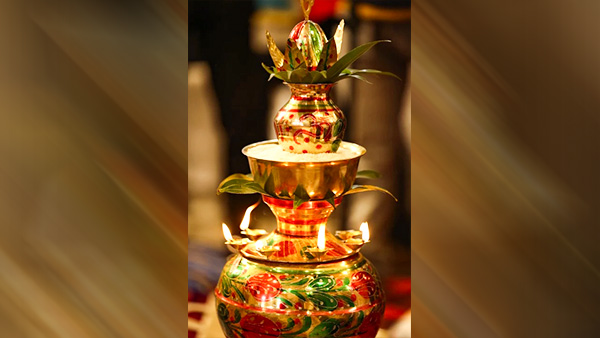Just In
- 2 hrs ago

- 4 hrs ago

- 4 hrs ago

- 5 hrs ago

Don't Miss
- Movies
 Jackie Shroff's Heartfelt Plea To Keep India's Strays Cool in the Heatwave Is Something You Can’t Miss
Jackie Shroff's Heartfelt Plea To Keep India's Strays Cool in the Heatwave Is Something You Can’t Miss - News
 PM Slams Cong On Pitroda's 'Inheritance Tax' Remark Says Its 'Dangerous Intentions' Coming To Fore
PM Slams Cong On Pitroda's 'Inheritance Tax' Remark Says Its 'Dangerous Intentions' Coming To Fore - Automobiles
 2024 Kia Carens Secures 3-Star Adult & 5-Star Child Safety Ratings – Detailed Look
2024 Kia Carens Secures 3-Star Adult & 5-Star Child Safety Ratings – Detailed Look - Technology
 Gigabyte Unveils AORUS CO49DQ: A Curved QD-OLED Gaming Monitor for Immersive Entertainment
Gigabyte Unveils AORUS CO49DQ: A Curved QD-OLED Gaming Monitor for Immersive Entertainment - Education
 Maharashtra Class 10th Result 2024 to be Released Soon; Check Minimum Marks Required to Qualify Maharashtra SS
Maharashtra Class 10th Result 2024 to be Released Soon; Check Minimum Marks Required to Qualify Maharashtra SS - Finance
 1:10 Split, 5 Bonus, 70% Dividend: Crorepati Defene PSU Hits New High, 108605% Returns; BUY For Long Term
1:10 Split, 5 Bonus, 70% Dividend: Crorepati Defene PSU Hits New High, 108605% Returns; BUY For Long Term - Sports
 DC vs GT My11Circle Prediction IPL 2024 Match 40: DEL vs GUJ Fantasy Tips & Expert Picks
DC vs GT My11Circle Prediction IPL 2024 Match 40: DEL vs GUJ Fantasy Tips & Expert Picks - Travel
 Mumbai Opens BMC Headquarters For Exclusive Heritage Tour
Mumbai Opens BMC Headquarters For Exclusive Heritage Tour
How To Drape Saree For Varamahalakshmi Kalasha
Draping a saree around an idol requires skills and therefore, nowadays, people look for professional help. But, the process is extremely simple and with little guidance and effort, one can easily drape a saree on the Kalash of Goddess Lakshmi a day prior to the Varamahalakshmi day.

Although draping the saree, at the outset, seems complicated, it could be learnt through trial and error and repeated attempts until you grasp the know-how. Also, it is believed that draping a saree on the kalash, as an activity, has its own calming effect on us.
All one needs to do is prepare the kalash first and then prepare the pleats inside the saree. Then one can go ahead and secure the fold of the saree around the kalash. Lastly, remove the pins used to drape the pleats and pallu. Let us go through the details to know more about it.
Saree Draping On Kalash: History And Significance
On Varamahalakshmi day, Goddess Varamahalakshmi is draped with a saree. The saree drape along with the kalash represents the married status and fortune. Goddess Lakshmi is symbolically worshipped using so many items that represent her. Bangles, Kumkum and Mangal sutra indicate that a woman is married. Since Goddess Lakshmi is married to Lord Vishnu, she should be draped in green or red, but not in black. She is a harbinger of wealth and fortune to Indian households.
The Draping Procedure
Things You would Need
- Silk saree
- Safety pins
- Plastic Clothespin
- Thread
- Plastic Clothespin
- Garland / Golden cloth
- Jewellery
- The Process
Choose any silk saree as per your preference as it lends a look of grandeur and majesty to the deity. Silk varieties like Kanchivaram or Mysore silk sarees are befitting and beautiful especially those red Kanchivaram sarees with checks and stripes that look unique and charming. Konrad silk or Patola silk saree could be good alternatives to the traditional silk. Take care to choose a thin bordered saree as it lets you weave rich and thickset pleats so that they cascade gracefully together on the kalash. Now focus on making pleats.

Pleat the saree according to the length, from the inside. Enough space from both the ends of the saree should be reserved for creating the pallu. Fold the saree over and over again, to create pleats. All the pleats should be of the same size. The entire saree is to be pleated except for the pallu portion. The kalash should be completely enveloped by the pleats. Keep on folding till the entire saree except for the pallu is pleated.
Stick clothespins and safety pins, in the right places to ensure that the pleats are all of the same sizes. Straighten the pleats section by section. The border of the pleated saree should be somewhat straight. If not, fix clothespins or safety pins on the top and bottom portions of the saree. Safety pins should pierce the saree vertically along pleats, in order to avoid unnecessary shifting.
Pallu portion is that vertical end of the saree that is left unpleated. It is the natural end of the saree, which you need to fold over and over again, this time, horizontally, at both ends of the saree. Pin the pallu folds with a clothespin or a safety pin but see that the folds are of the same size and width.
When you have finished pleating the pallu and the rest of the saree, fold the saree, taking care not to fold it in half. One side of the saree should be longer than the other side and it should drape the kalash and remain hidden from view. Fasten the fold with a thread and tie it tightly so that it does not let the saree slip or slide. Knot the string twice so that it does not give way later.
Attach the saree to the Kalash before you drape the saree on it. Using the thread already tied to the saree, wrap the thread around the stick and neck of the kalash. Tie the thread tightly after which the longer side of the saree is seen at the bottom of the kalash. After the pleats are fastened, remove the pins and arrange the pleats around the kalash. The shorter side of the saree would superimpose on the top of the longer end. Pin the pleats at the back side of the kalash to keep it hidden from view.
One of the pallus has to be draped over the stick of the kalash so that the stick remains completely hidden. Lastly, tie a thread at the base of the kalasam to make it look like a waist for the kalash.
Deck the Goddess Lakshmi's idol with flowers and jewellery. Adorn the neck of the idol with a golden cloth or a flower garland. Tie a golden-hued band around the base to just hide the thread. Arrange golden necklaces and bangles on the deity to bring the entire process to a conclusion.
Disclaimer: The information is based on assumptions and information available on the internet and the accuracy or reliability is not guaranteed. Boldsky does not confirm any inputs or information related to the article and our only purpose is to deliver information. Kindly consult the concerned expert before practising or implementing any information and assumption.
Image sources: Wikimedia Commons
-
 festivalsSignificant Temples Dedicated To Goddess Mahalakshmi
festivalsSignificant Temples Dedicated To Goddess Mahalakshmi -
 festivalsVaramahalakshmi Vrata - Things That Please Goddess Lakshmi
festivalsVaramahalakshmi Vrata - Things That Please Goddess Lakshmi -
 festivalsVaralakshmi Festival 2021: Things You Should Know About This Day
festivalsVaralakshmi Festival 2021: Things You Should Know About This Day -
 festivalsSarees To Drape For Goddess Lakshmi On Kalasha
festivalsSarees To Drape For Goddess Lakshmi On Kalasha -
 maincourseMain Recipes For Varamahalakshmi Festival
maincourseMain Recipes For Varamahalakshmi Festival -
 festivalsVaramahaklakshmi Puja 2021: How To Celebrate This Auspicious Festival
festivalsVaramahaklakshmi Puja 2021: How To Celebrate This Auspicious Festival -
 yoga spiritualityHanuman Jayanti 2024: Hanuman Chalisa Lyrics With Meaning, When And How Many Times To Recite It
yoga spiritualityHanuman Jayanti 2024: Hanuman Chalisa Lyrics With Meaning, When And How Many Times To Recite It -
 yoga spiritualityHanuman Jayanti 2024: 4 Ways You Can Worship Lord Hanuman To Get His Blessings
yoga spiritualityHanuman Jayanti 2024: 4 Ways You Can Worship Lord Hanuman To Get His Blessings -
 yoga spiritualityWhen Is Chaitra Purnima 2024, 23rd Or 24th April? Confirmed Date, Time, Puja Rituals, History And Significance
yoga spiritualityWhen Is Chaitra Purnima 2024, 23rd Or 24th April? Confirmed Date, Time, Puja Rituals, History And Significance -
 yoga spiritualityMahavir Jayanti 2024: Date, Time, History, Celebrations And Teachings Of Lord Mahavir In Jainism
yoga spiritualityMahavir Jayanti 2024: Date, Time, History, Celebrations And Teachings Of Lord Mahavir In Jainism -
 yoga spiritualityThrissur Pooram 2024: Date, Time, History, Significance, And Celebrations Related To Kerala's Rich Traditions
yoga spiritualityThrissur Pooram 2024: Date, Time, History, Significance, And Celebrations Related To Kerala's Rich Traditions -
 yoga spiritualityKamada Ekadashi 2024 Wishes: Greetings, Messages, Texts, Images, Twitter Status And Instagram Captions
yoga spiritualityKamada Ekadashi 2024 Wishes: Greetings, Messages, Texts, Images, Twitter Status And Instagram Captions


 Click it and Unblock the Notifications
Click it and Unblock the Notifications



